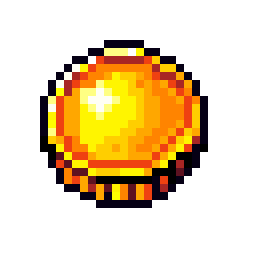Raspberry Pi Circuit Board: Green Tech Blueprint
This pixel art image showcases a detailed, top-down view of a Raspberry Pi circuit board, highlighting its components with a vibrant green PCB and contrasting greys and golds. Floating against a stark black background, the piece evokes a sense of technical precision and appreciation for the intricate design of this miniature computer.
Read More
The pixel art image depicts a single subject: a Raspberry Pi single-board computer, presented in a top-down, slightly angled perspective that emphasizes its rectangular form. The board is oriented horizontally, with its longer dimension stretching across the frame.
The Raspberry Pi is depicted as a static, laid-out object, showcasing its various components. Its posture is flat and inactive, as expected of an electronic circuit board. There is no implied movement or expression, as it is an inanimate object.
The composition places the Raspberry Pi centrally within the dark, expansive frame, allowing it to be the sole focus without any distractions. It occupies a significant portion of the horizontal space, appearing almost to float within the black void.
There is no background scenery or environment to speak of; the subject is presented against a pure, untextured black backdrop, which serves to isolate the circuit board and highlight its intricate details.
The color palette is relatively limited but effective. The dominant color is a vibrant, medium-saturated green, representing the PCB itself. This is contrasted by various shades of grey (light, medium, and dark) used for the integrated circuits, connectors, and other metallic or plastic components. Gold/yellowish-orange pixels are used for the GPIO pins and some smaller connectors, providing small points of warm contrast. A few tiny darker green or black pixels define outlines and labels on the board. The overall color scheme is functional and true to the appearance of a circuit board, leaning towards a slightly muted but realistic representation with touches of color for differentiation.
The overall vibe of the image is precise, technical, and slightly minimalist. It evokes a sense of clarity and appreciation for the detailed engineering of small computing devices. It could be seen as educational, illustrative, or even slightly nostalgic for those familiar with early computing or pixel art.
Regarding details, the image meticulously renders many features identifiable on a Raspberry Pi. On the left side, a cluster of golden pins (likely GPIO) is visible. Towards the bottom edge, a USB-C power input port is clearly depicted in grey, flanked by two standard USB-A ports on the right. Further right, an Ethernet port and a series of other connectors, including what appears to be an HDMI port and an audio jack, are represented. Multiple integrated circuits (ICs) of varying sizes, characterized by their grey color and rectangular forms, are scattered across the green board. Subtle pixelated text or logos, although unreadable, are implied on the PCB surface, adding to the authenticity. The fine arrangement of small dots, lines, and squares meticulously creates the impression of resistors, capacitors, and traces, giving the pixel art a surprising level of intricate detail for its resolution.
 0
0
